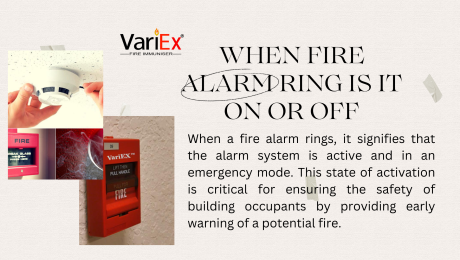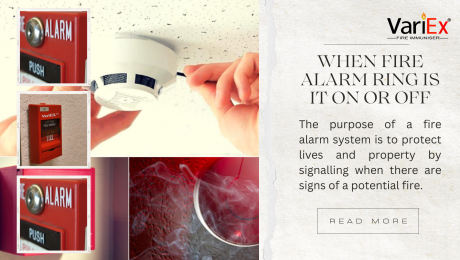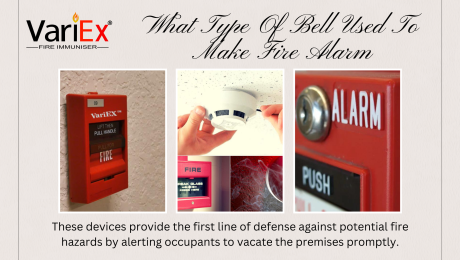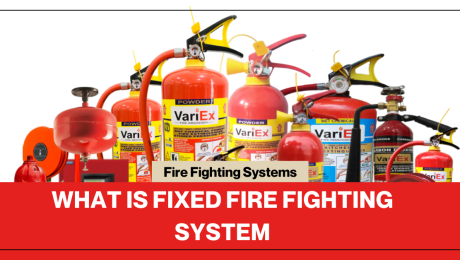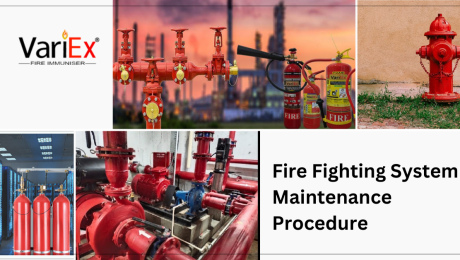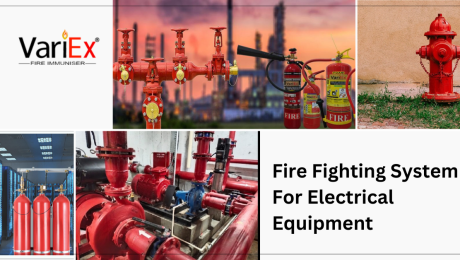A Fire Alarm System for the home is an indispensable safety feature, providing crucial early detection and rapid response to potential fire threats. Comprising detectors, sensors, and alert mechanisms, these systems swiftly identify signs of smoke, heat, or flames. Modern advancements include integration with carbon monoxide detection for comprehensive safety. In the event of a fire, the system emits a loud, distinctive sound, serving as a vital early warning for occupants to evacuate promptly. Regular testing, maintenance, and adherence to safety standards are imperative to ensure the reliability of the home fire alarm system. Investing in such a system is a proactive and essential measure, offering peace of mind and safeguarding lives and property. In homes, where prevention is paramount, a robust Fire Alarm System is a critical component of a comprehensive safety strategy.
Why Fire Ball Is Important
- Published in Fire Extinguisher, Fire Fighting System, Fire Safety Equipment
Why Fire Ball Explosion
- Published in Fire Extinguisher, Fire Fighting System, Fire Safety Equipment
What Type Of Bell Used To Make Fire Alarm
- Published in Fire Alarm
What Is Fixed Fire Fighting System
What Are The Main Components Of Fire Fighting System?
Fire Fighting System Maintenance Procedure
Regular maintenance of fire fighting systems is essential to ensure their continued functionality and reliability in the event of a fire emergency. This guide outlines the key procedures involved in maintaining fire suppression systems to mitigate risks and protect lives and property.
1. Scheduled Inspections:
- Conduct scheduled inspections of all components of the fire fighting system, including control panels, piping, nozzles, detectors, fire alarms system, and fire extinguishers.
- Inspections should be performed by qualified technicians according to manufacturer guidelines and regulatory requirements.
2. Functional Testing:
- Perform functional tests of the entire fire fighting system to verify proper operation and response.
- Test alarms, detectors, and suppression equipment to ensure they activate as intended.
- Simulate fire scenarios to assess the system’s effectiveness in detecting and suppressing fires.
3. Inspection of Components:
- Inspect piping, valves, and nozzles for signs of corrosion, leaks, or damage.
- Check detectors and alarms for proper positioning, cleanliness, and functionality.
- Verify that control panels and electrical connections are secure and free from defects.
Fire Fighting System For Electrical Equipment
In today’s technologically driven world, the reliance on electrical equipment is ubiquitous, spanning industries from manufacturing plants to data centers and commercial buildings. However, alongside the convenience and efficiency these systems provide, there exists a persistent risk of electrical fires. These fires, often swift and devastating, pose significant threats to personnel safety, property integrity, and business continuity. To address this critical issue, the implementation of comprehensive fire fighting systems specifically tailored for electrical hazards is paramount.
Types Of Valves Used In Fire Fighting System
In the realm of fire safety, the effectiveness of fire fighting systems relies heavily on the proper functioning of various valves. These valves play a critical role in controlling the flow of water, directing it to the areas where it’s needed most during fire suppression efforts. This article delves into the different types of valves used in fire fighting systems, highlighting their functions and importance in ensuring swift and effective response to fires.
What Is Fixed Fire Fighting System
A fixed fire fighting system refers to a comprehensive fire suppression system installed in a building or an industrial facility. It is designed to automatically detect and extinguish fires in their early stages without human intervention. This system typically consists of a combination of sensors, detectors, valves, pipes, and nozzles strategically placed throughout the area to provide effective fire protection. Examples of fixed fire fighting systems include sprinkler systems, gas suppression systems, water mist systems, and foam systems. These systems are crucial in preventing the rapid spread of fire and minimizing damage to property, as well as ensuring the safety of occupants and employees. It is essential to regularly inspect, maintain, and test these systems to ensure their proper functioning when needed.
How to Buy the Best Fire Alarm for Your Building
Being caught in a fire mishap is scary to think about, but it’s an unfortunate truth that many firefighters have to fight with thousands of building fires every year. According to the Consumer Product Safety Commission, the risk of dying in homes without smoke alarms is twice as high as it is in homes that have working smoke alarms.
And, to escape a building fire, early warning is vital; and for this reason, every home or business needs a smoke alarm. A smoke alarm is one of the best yet most affordable ways to provide early warning when a fire begins at your premise. A fire alarm or smoke detector is a portable device, which can help prevent injuries and minimize property damage if it is installed and maintained properly.
But with several different types of automatic alarm systems out there, it can be confusing to know which one is the best for your house. Therefore, we are writing this Blog that will help you to choose the best one for faster smoke detection. Let’s get started!
- Published in Fire Alarm
Fire Alarm System can secure your Home during Diwali
Yes, a Fire Alarm is a device that helps in securing your home and offers fire safety solutions to the people during Diwali celebrations. Diwali is a festival of happiness and joy; one shares his love with others in various forms, like distributing sweets, gifts and bursting fireworks. Diwali denotes festival of lights hence, celebrated with the use of diyas, candles, and oil lamps. It is believed that light implies kindness and mercy, and because of this belief, several lamps used throughout the day and night to ward off the darkness, and evil.
The report shows, there is a bigger fire risk at Diwali time because of diyas, candles, and fireworks. But, you can reduce the risks for home and your family just by taking a few simple defenses.
Installation of Fire Alarm System in your house is one of the best precautions or safety measures that you should follow!
Fire alarms save lives, thus make sure to install it on every floor of your house. A fire alarm has a very good fire detection capacity, which is capable of warning you immediately if any fire happens even during Diwali. A fire alarm or a smoke detector is a useful safety product that detects fire in its early stages and alerts you with an audio-visual warning.
The VariEx Fire Alarm or Smoke Alarm is designed in such a way to detect any kind of fire or smoke, which allows you to escape from your home safety when a fire detects. It is one of the best safety tools or equipment that operates through diverse functionalities such as automatic, semi-automatic, or manual. There is a total of four types of fire safety alarm available on VariEx, such as Standalone Fire Alarm System, Conventional Fire Alarm System, Addressable Fire Alarm System, and Wireless Fire Alarm System. These types of fire alarms or smoke detectors are manufactured and inspected as per International Safety & Quality Standard. VariEx offers the best possible pricing facilities to its customers when they are willing to buy its fire alarm system.
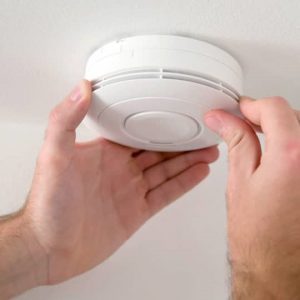
Fitting instructions of Fire Alarms
Fire alarms (heat detectors / fire detectors) should be fitted in almost every room of your house for the maximum protection of smoke alarms. But you may install at least one alarm on each floor of your house-building. It is advisable to fix the fire alarm of the VariEx brand into the ceiling and at least 30 centimeters (12 inches) away from any wall or light fitting, and as close to the center of the room, or hallway as possible. And, it’s important to read the manufacturer’s instructions before attaching the smoke alarm in the ceiling.
Maintenance of Fire Alarms
- Test your smoke alarm system batteries by pressing the test button for at least five seconds until you hear the beeps, on every month.
- Replace the lead or alkaline batteries of fire alarm once in a year.
- Check the alarm by pressing the test button, once a week.
- Vacuum and wipe the dust from smoke alarms once in a year as it may cause blocking the sensor chamber.
- Replace our smoke alarms with new 10-year lithium powered smoke alarms in every 10 years, or earlier if it is specified by the manufacturer.
- Published in Fire Extinguisher




